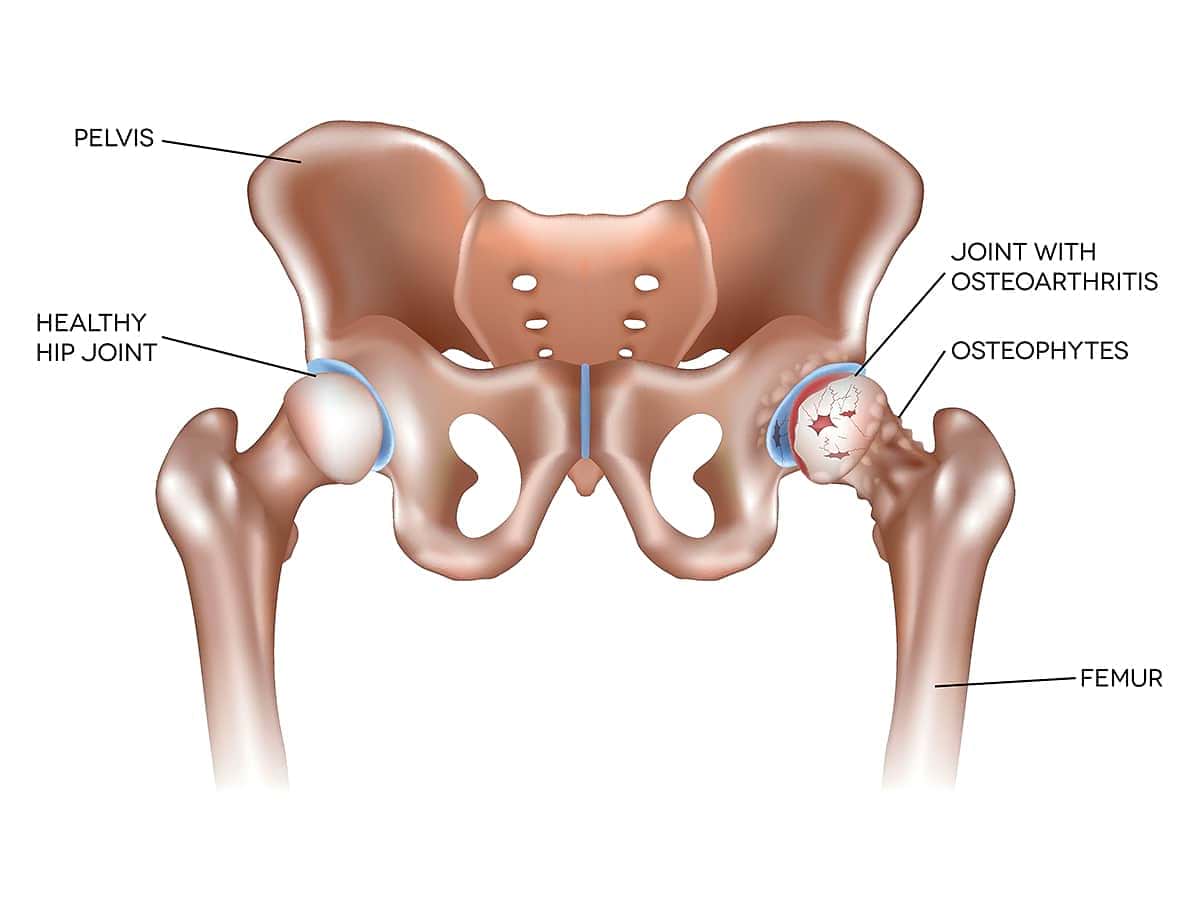Introduction
Most cases of arthritis affecting the hips are caused by osteoarthritis (often referred to as 'hip OA'), although rheumatoid arthritis can also affect the hips. Osteoarthritis specifically affects the cartilage in the hip joint which sits between the ball and the socket – this is known as 'articular cartilage'.

The condition primarily affects older people, but younger people can be affected, especially where there has been some injury to the hip, either from trauma of some description or repetitive heavy pressure placed on the hips over time.
Causes
The exact reason as to why arthritis develops in the hips is not fully understood, however certain factors are known to increase the risk of developing the condition. These risk factors are;
- Age – cartilage tissue naturally deteriorates with age.
- Prior injury to the hip / hip joint.
- Body weight factors such as being overweight / obese.
- Genetic factors – defects in either the joint components or the articular cartilage.
- Weakness in one or more of the muscles surrounding the hip joint.
- Activities (generally either sport or work related) which place greater than normal strain on the hips.
Symptoms
The following symptoms may indicate hip arthritis:
- Pain / stiffness in the hips or in the buttocks or in the front thigh (often most apparent just after getting out of bed or after sitting down for an extended period).
- Sharp pain in the groin area.
- Some body movements can become difficult, for example pointing the toes or crossing the legs.
- Some daily activities can become difficult, for example walking or driving, using the stairs, getting in or out of a chair, or squatting down.
In some cases of hip arthritis, symptoms initially present as problems with the knees.
Tests / Diagnosis
Diagnosis of hip arthritis generally involves an initial physical examination, during which the range of motion of the hip joint(s) will be assessed as well as how the patient walks.
After the physical examination an X-ray may be required to determine whether there has been any bone loss in the joint or whether the ball and socket have a smaller gap between them which would indicate loss of cartilage tissue. Blood tests may also be required to determine any other cause (for example rheumatoid arthritis as opposed to osteoarthritis).
Treatment
A number of non-surgical treatments may be recommended, from anti-inflammatory medication (for example NSAIDs or corticosteroids) to physiotherapy and exercises, to simply using walking aids. Surgery (for example total hip replacement) may be recommended if non-surgical treatments do not achieve the desired results.

